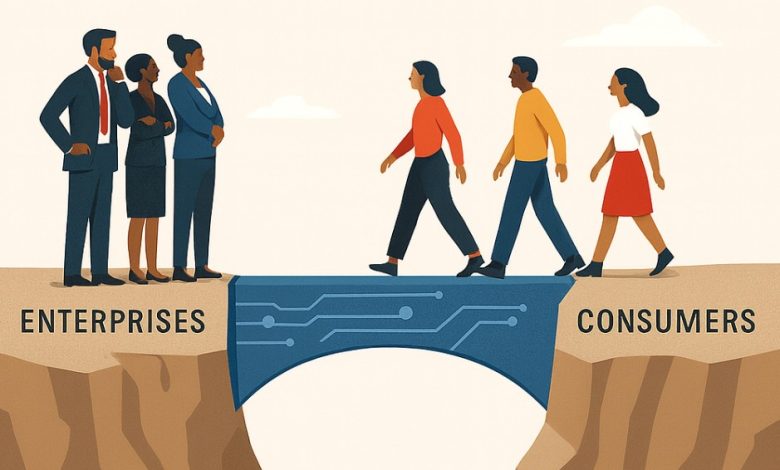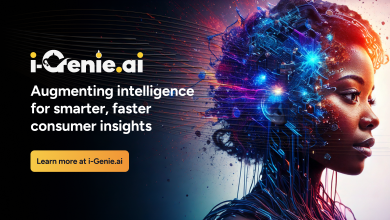
Introduction
Marketing leaders report that they are currently delivering some of their strongest campaigns, according to a recent survey conducted by the Northwestern Medill Spiegel Research Center. This finding emerges against a backdrop in which AI adoption has accelerated dramatically: overall use has doubled since 2022 and is projected to increase by another 157% within the next three years, while generative AI adoption alone rose 116% in the past year (Deloitte, CMO Survey 2025, 43–44). Yet despite $30–40 billion in enterprise investment in GenAI, 95% of organizations report realizing no measurable return (MIT, The GenAI Divide: State of AI in Business 2025, 3).
These early reports suggest that the real challenge lies not in the capability of the tools, but in organizations’ readiness to adopt them. Artificial intelligence has shifted from a curiosity to a near-mandate almost overnight, with generative AI now a fixture on boardroom agendas. Executives see its potential to transform customer insight and content creation, yet most initiatives stall before scaling beyond the pilot stage. The technology is here, the promises are bold, but organizational readiness continues to lag.
Findings from the Spiegel Research Center’s 2025 Integrated Marketing Communications (IMC) Council survey and interviews with marketing executives from the Spiegel Scholars’ Program point to a readiness gap—that is, a shortfall in how prepared organizations are to adopt this new wave of emerging AI tools. Drawing insights from 161 senior marketing professionals across various industries and 22 executive interviews, the report reveals a widening readiness gap: enterprises are experimenting with AI tools, but are slow to build the literacy and integration required to scale them, even as more than half (57%) of respondents rate their IMC efforts as “very good” or “excellent,” the highest levels ever recorded, 47% cite coordinating cross-channel campaigns coordination as the top concern.
In this article, we draw on both survey and interview results to identify the factors that limit AI adoption in most marketing organizations, while consumers are increasingly embracing AI in their daily lives. We then explore how leaders can bridge the gap between ambition and impact.
The Readiness Gap: Skills, Not Tools
The IMC Council Survey revealed a quality–complexity tension: marketers rated their quality of integrated marketing campaign execution as having increased, yet challenges persist in cross-channel coordination. More than half of respondents rated their company’s IMC efforts as “very good” or “excellent,” but 45% still cite the complexity of coordinating all IMC efforts as their top concern for 2025. This highlights that readiness can’t be measured only by campaign quality. True readiness means aligning people, processes, and platforms, and that’s where most organizations fall short.
This tension mirrors current AI adoption trends. On the one hand, the use of marketing technology is nearly universal, with 83% of marketers rating analytics tools as highly important, and 77% say the same of email platforms. On the other hand, 42% identified integrating AI and machine learning as their top shortage, while 36% cited embracing emerging technologies as a major concern. In short, user and consumer adoption have outpaced company execution of AI in marketing.
Industry voices confirm that this readiness gap is becoming visible in consumer behavior. While companies hesitate, consumers are embracing AI with startling speed. The SVP of Marketing Operations at a financial holding company noted:
“AI is definitely impacting search. People are not going beyond those AI results, which is resulting in a dip in traffic on websites. I myself am guilty of it—if I see something in that AI search result, I’m more likely to be like, okay, that’s the answer I needed, and keep moving on.”
The pace of consumer adoption is startling even to experts. A senior lecturer at a midwestern university observed:
“When I think about AI search adoption, I’m struck by how fast it’s happening, much faster than anything I’ve seen before. It reminds me of Amara’s Law: we tend to overestimate the effect of a technology in the short run and underestimate the effect in the long run.”
For smaller or resource-constrained organizations, this challenge is even sharper. As the VP of Business Development & Marketing at a nonprofit reflected:
“We’re a small company in the nonprofit space, so we’re not early adopters of AI tools. But it is top of mind and something we’re actively working to incorporate more. I see this shift away from Google search toward AI platforms like ChatGPT or Gemini… At some point, the default will no longer be Google search.”
This experience underscores a broader truth: even when leaders recognize AI’s inevitability, successful adoption depends on people who can interpret and integrate it in meaningful ways. Without that, tools sit idle or people apply them inconsistently.
The survey data support this tension: 43% of firms with revenues under $50M cite embracing emerging technologies as a top priority, compared to 26% of mid-sized firms and 24% of large firms. Smaller organizations may lack resources, but they often feel the urgency of technological change most acutely.
In other words, consumer expectations are accelerating faster than enterprise capabilities. The firms that will keep pace are those whose leaders not only close skills gaps but also champion emerging technologies as strategic priorities.
How AI Is Changing Consumer Behavior
AI isn’t just transforming how marketers work; it’s reshaping how consumers search and make decisions online. AI is reshaping consumer behavior on three fronts: how people discover brands, how much they trust recommendations, and who adopts the technology the fastest. Traditional search engines are no longer the default entry point; AI-driven results increasingly serve as the first and often only touchpoint in a customer’s journey.
However, the slow growth of AI adoption within companies can be attributed to the realities of marketing today. The IMC Council Survey confirms that IMC remains marketers’ #1 challenge, with the sheer breadth of responsibilities, from coordinating multiple channels to aligning sales, PR, and technology, leaving little bandwidth to experiment at scale.
This burden helps explain why enterprises lag even as consumers race ahead. While marketing leaders wrestle with integration and coordination, consumers are quickly adapting to new AI-powered search and decision tools.
The Founder of a global marketing consulting firm captured the shift in framing:
“Brands now need to think not only about whether they are visible, but also about how they are framed by the model.”
This is no longer about optimizing content for human eyes alone. As the senior product manager at a retail company explained:
“The future of discoverability lies in how cleanly and consistently your product information can be understood by machines, not just humans. Structured data and natural language descriptions now function as training inputs, not just content.”
Industry experts echo this shift in how consumers are shortening funnels and arriving at purchase decisions. The CMO and Co-Founder of a digital marketing and web design company observed:
“When someone comes through a website after having done a conversation with AI… They feel very qualified when they land on the page. Conversion rates from AI sources seem to be very high in the accounts I look at.”
This shift also places new weight on earned and owned media. A professor of Marketing at a university emphasized:
“Earned and owned content becomes way more important. PR matters again. Press coverage matters again. Being featured in reputable publications matters. Because if the LLM is trained on news sites and credible sources, you want your brand to be in those sources.”
The CMO and Co-Founder of the digital marketing and web design company added the tactical implication:
“If you want AI to recommend your brand, you need to have lots of instances in the training data of your brand near adjacent industry terms… That means investing in PR, building relationships with editors, and publishing detailed stories.
But discoverability is only half the equation. Trust remains fragile. The VP of Marketing Operations at a nonprofit network warned:
“If I ask ChatGPT what shoes to buy, how do I know if the answer is based on what’s best for me or if it’s influenced by someone paying to be featured? That blurs the line between organic relevance and paid visibility. And without transparency, trust becomes harder to earn.”
Generational and professional divides further complicate these dynamics. As Head of Marketing at a global cross-platform creative production and outsourcing company, observed:
“Think of my grandma or my mom. They only look at the first few results they are getting. They’ll simply believe what’s shown on Google or an AI overview. This is normal with even youngsters as well. Attention spans are decreasing every day, and they’ll only look at summaries.”
The IMC Council Survey reveals that senior marketing leaders are driving adoption at a strategic level: professionals with 16 or more years of experience are significantly more likely (50%) to prioritize embracing emerging technologies, such as AI and automation. But when it comes to day-to-day usage, adoption often skews younger.
As the VP of Digital Strategy & Marketing at a Medical Association, explained,
“Younger physicians and students are much quicker to adopt AI-driven search tools, while more senior physicians still default to traditional Google search. That difference is already showing up in how they engage with our content.”
Together, these perspectives illustrate the new reality: AI is compressing consumer journeys, shifting trust signals, and amplifying generational divides. Marketers must adapt by ensuring their brands are both machine-readable and human-trustworthy, while meeting audiences where they are, whether in traditional search or AI-driven summaries.
Closing these gaps between the concept and adoption requires more than tools. It requires leadership, new metrics, and integrated workflows.
A Framework for Closing the Gap
Taken together, the results from the IMC Council Survey and Spiegel Scholars’ Program marketing executive interviews suggest three imperatives for leaders serious about AI:
- Build Literacy: Close the AI and skills gap across teams. Upskilling isn’t optional; it’s the foundation for scaling AI.
- Center the Consumer: Design AI adoption around real shifts in consumer behavior from AI-driven search to shorter decision paths rather than internal processes alone.
- Integrate Workflows: Stop treating AI as isolated pilots. Embed it into existing CRM, analytics, and content processes so it augments rather than fragments.
This framework reflects a shift in mindset. AI readiness is not about acquiring the next tool; it’s about aligning people, processes, and measurement with the possibilities AI unlocks.
Conclusion
The 2025 IMC Council Survey and executive interviews reveal that the marketing industry is at a crossroads: consumers are rapidly embracing AI, while companies struggle to keep pace. For global marketing leaders, particularly in the US, the challenge is less about access to AI and more about scaling it consistently across markets and teams. Execution quality is strong, tools are widely adopted, and budgets continue to rise. Yet coordination and skills remain stubborn barriers. At the same time, consumer adoption of AI is accelerating, reshaping everyday decision-making behaviors.
If there’s one lesson from both the survey and expert interviews, it’s this: AI transformation is less about machines and more about people. The organizations that succeed will be those that invest in literacy, rethink measurement, and build trust in the age of AI-driven discovery. The ones that fail will be those that confuse adoption with readiness.
The hype cycle will pass. What will remain are the companies that treat AI not just as a tool, but as a catalyst for new skills, trusted consumer relationships, and integrated execution.



